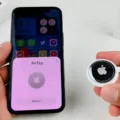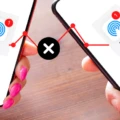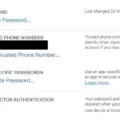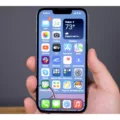AirDrop is a convenient feature available on Apple devices that allows you to easily share files, photos, and more with other nearby Apple users. However, there may be times when AirDrop is not working as expected. In this article, we will explore some potential reasons why AirDrop may not be functioning properly and provide step-by-step solutions to help you resolve the issue.
Firstly, it’s important to ensure that both Wi-Fi and Bluetooth are turned on. AirDrop requires both of these features to be enabled in order to function properly. You can check the status of Wi-Fi and Bluetooth by swiping up from the bottom of your iPhone or iPad screen to access the Control Center. Make sure the icons for Wi-Fi and Bluetooth are highlighted, indicating that they are turned on.
Next, it’s crucial to ensure that all of your Apple devices are up to date. Outdated software can sometimes cause compatibility issues with AirDrop. To check for updates on your iPhone or iPad, go to Settings > General > Software Update. On your Mac, click on the Apple menu in the top-left corner, then select System Preferences > Software Update.
If your AirDrop is still not working, try restarting your devices. Simply turn off your iPhone, iPad, or Mac, wait a few seconds, and then turn it back on. This can often resolve minor software glitches that may be causing issues with AirDrop.
Another possible reason for AirDrop not working is that it may be restricted to Contacts only on the recipient device. To change this setting, go to Settings > General > AirDrop on your iPhone or iPad, or open Finder on your Mac and click on AirDrop in the sidebar. Ensure that the option to receive files from “Contacts Only” or “Everyone” is selected, depending on your preference.
If none of the above solutions work, you can try updating your iOS or resetting your network settings. Updating your iOS to the latest version can often fix any bugs or software issues that may be affecting AirDrop. To update your iOS, go to Settings > General > Software Update.
Resetting your network settings can also help resolve connectivity issues that may be affecting AirDrop. Keep in mind that this will remove all saved Wi-Fi passwords, so make sure you have them handy before proceeding. To reset network settings on your iPhone or iPad, go to Settings > General > Reset > Reset Network Settings.
AirDrop is a useful feature that allows you to easily share files with other Apple users. If you’re experiencing issues with AirDrop, make sure Wi-Fi and Bluetooth are turned on, update your devices, restart them, check AirDrop restrictions, and consider resetting network settings. By following these steps, you should be able to get your AirDrop working properly again.

Why is Your AirDrop Not Working On iPhone?
There could be several reasons why AirDrop is not working on your iPhone. Here are some possible causes and solutions:
1. Wi-Fi and Bluetooth are turned off: AirDrop requires both Wi-Fi and Bluetooth to be enabled on your iPhone. Make sure they are turned on by going to the Control Center and checking the status of the Wi-Fi and Bluetooth icons.
2. Devices are not in close proximity: For AirDrop to work, the devices you want to share files with should be within close range of each other. Make sure the devices are within 30 feet (9 meters) of each other.
3. AirDrop is set to “Off” or “Contacts Only”: Check your AirDrop settings to ensure it is turned on and set to either “Everyone” or “Contacts Only.” To do this, go to Settings > General > AirDrop and select the desired option.
4. Software updates are pending: Outdated software can cause compatibility issues with AirDrop. Ensure that your iPhone is running the latest version of iOS by going to Settings > General > Software Update. If an update is available, install it.
5. AirDrop is not supported on your device: AirDrop is available on iPhone 5 or later models, fourth-generation iPad or later models, all iPad Pro models, iPad mini, and iPod touch (fifth generation) or later models. If your device is older than these models, AirDrop may not be supported.
6. Your iPhone is locked or in sleep mode: AirDrop requires your iPhone to be unlocked and not in sleep mode for it to work. Make sure your iPhone is awake and unlocked during the AirDrop process.
7. Restart your devices: Sometimes, a simple restart can resolve temporary glitches or conflicts. Restart your iPhone, as well as the other devices you are trying to AirDrop with, and then try again.
If none of these solutions work, you may need to contact Apple Support for further assistance.
Why Isn’t Your AirDrop Finding Anyone?
There could be several reasons why your AirDrop is not finding anyone. Here are some possible explanations:
1. Restricted to Contacts: AirDrop is designed to only discover and connect with people who are in your Contacts list. If the person you are trying to AirDrop to is not saved as a contact, your device may not be able to find them.
2. Wi-Fi or Bluetooth turned off: AirDrop requires both Wi-Fi and Bluetooth to be enabled on both devices for it to work. If either Wi-Fi or Bluetooth is turned off on either your device or the recipient’s device, AirDrop will not be able to find anyone.
3. Distance: AirDrop has a limited range, typically around 30 feet (9 meters). If you are too far away from the person you are trying to AirDrop to, your device may not be able to detect them.
4. Compatibility: AirDrop is only available on certain Apple devices. Make sure that both your device and the recipient’s device are compatible with AirDrop. Check the Apple website for a list of supported devices.
5. Network issues: AirDrop relies on a stable network connection to work properly. If there are any network issues, such as a weak Wi-Fi signal or congestion on the network, AirDrop may not be able to find anyone.
6. Privacy settings: It is possible that the recipient’s device has AirDrop set to receive from “Contacts Only” or “Receiving Off” mode. In this case, you will not be able to find them on AirDrop unless they change their settings.
To troubleshoot the issue, you can try the following steps:
– Make sure that both Wi-Fi and Bluetooth are turned on and functioning properly on both devices.
– Ensure that both devices are within the range of each other.
– Check if both devices are compatible with AirDrop.
– Verify if the recipient’s AirDrop settings allow for receiving from everyone or from contacts.
– Restart both devices and try AirDrop again.
If none of these steps work, it is recommended to contact Apple support for further assistance.
How Do You Reset AirDrop On Your iPhone?
To reset AirDrop on your iPhone, you can follow these steps:
1. Open the Control Center on your iPhone by swiping down from the top right corner of the screen (on iPhone X or later) or swiping up from the bottom of the screen (on iPhone 8 or earlier).
2. Press and hold the network settings card in the top left corner of the Control Center. This card displays the Wi-Fi, Bluetooth, and AirDrop icons.
3. Tap and hold the AirDrop icon (which looks like a series of concentric circles) until a pop-up menu appears.
4. From the pop-up menu, select “Receiving Off” or “Contacts Only” to disable AirDrop temporarily. This will prevent other devices from seeing your device for AirDrop transfers.
5. After a few seconds, tap the AirDrop icon again and select “Everyone” to re-enable AirDrop. This will allow your device to be visible to other devices for AirDrop transfers.
By following these steps, you can reset AirDrop on your iPhone and ensure that it is working properly.
How Can You Get Your AirDrop to Work?
To get your AirDrop to work, follow these steps:
1. Make sure that both devices have AirDrop enabled. Swipe up from the bottom of your iPhone or iPad to access the Control Center. On Mac, go to Finder and click on AirDrop in the sidebar. Set AirDrop to “Everyone” or “Contacts Only” depending on your preference.
2. Ensure that both devices are within close proximity to each other, ideally within 30 feet (9 meters).
3. On the device you want to share from, open the app or file you want to send via AirDrop. For example, if you want to share a photo, open the Photos app.
4. Look for the Share button within the app. It usually looks like a square with an arrow pointing upwards. Tap on it.
5. A list of sharing options will appear. Look for the AirDrop icon, which is represented by concentric circles with a blue background. Tap on it.
6. Your device will start searching for nearby AirDrop users. After a few seconds, a list of available AirDrop recipients will appear.
7. Tap on the name or photo of the intended recipient to initiate the transfer. You can choose multiple recipients if needed.
8. On the recipient’s device, a notification will appear asking them to accept or decline the AirDrop transfer. They need to tap “Accept” to receive the file.
9. Once the transfer is complete, a confirmation message will appear on both devices.
If you are still experiencing issues with AirDrop, consider the following troubleshooting steps:
– Make sure that both devices are connected to Wi-Fi or Bluetooth.
– Restart both devices and try again.
– Disable and re-enable AirDrop on both devices.
– Check if there are any software updates available for your devices and install them.
– If you are using a Mac, go to System Preferences > Security & Privacy > Firewall, and make sure that the Firewall is not blocking AirDrop.
– If you are using a VPN or a third-party firewall, temporarily disable them and try again.
By following these steps, you should be able to successfully use AirDrop to share files between your Apple devices.
Conclusion
AirDrop is a convenient and fast way to share files, photos, and more between Apple devices. However, there are several factors that can affect its functionality. It is important to ensure that both Wi-Fi and Bluetooth are turned on, as AirDrop relies on these connections. Also, make sure that your devices are up to date and unlocked, as this could potentially prevent AirDrop from working properly.
If AirDrop is not working, there are several troubleshooting steps you can take. First, try turning off and enabling Wi-Fi and Bluetooth on both devices. This can help refresh the connections and potentially resolve any issues. Additionally, check if AirDrop is restricted to Contacts only on the recipient device, as this could limit its functionality. If necessary, remove these restrictions to allow for wider sharing options.
If the problem persists, it may be helpful to force reboot both devices. This can help clear any temporary glitches or conflicts that could be affecting AirDrop. Updating iOS to the latest version is also recommended, as this can often resolve any compatibility issues.
In some cases, resetting network settings can help resolve AirDrop problems. This can be done by going to the Settings app, selecting General, and then choosing Reset. From there, select Reset Network Settings. However, be aware that this will erase saved Wi-Fi passwords and other network settings, so be prepared to re-enter them.
AirDrop is a useful feature that can greatly enhance the sharing capabilities of Apple devices. By following these troubleshooting steps and ensuring that all settings are properly configured, AirDrop should be able to function smoothly and efficiently.













